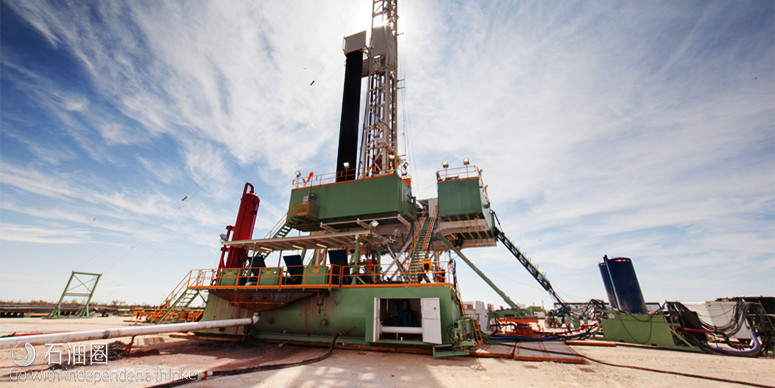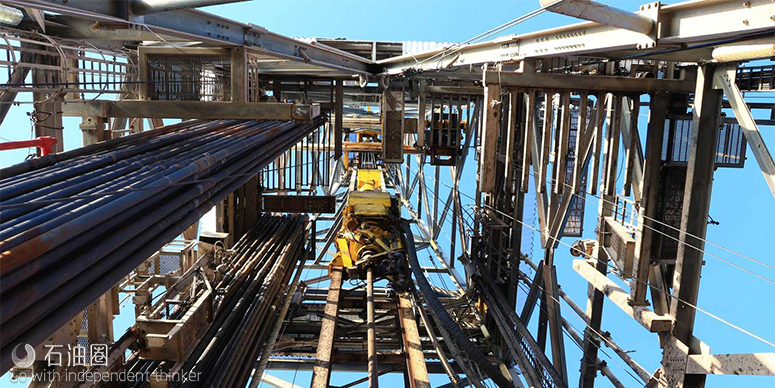OptiWell Well construction performance service
The OptiWell* well construction performance service monitors and analyzes processes and downhole conditions in real time to facilitate improvement in the overall safety and efficiency of the well construction process. From 24 /7 monitoring for downhole hazards to identifying inefficiencies, the OptiWell service mitigates HSE risks and both invisible lost time (ILT) and NPT.
Performance Management
The performance management component of the OptiWell service includes monitoring and analysis of the well construction processes to quickly pinpoint inefficiencies. From there, the operator can integrate a variety of monitoring and analysis services, such as the RigHour multiwell drilling operational efficiency analysis, to improve drilling efficiency and reduce ILT.
Set and track well operation KPIs versus KPOs
Schlumberger collaborates with the customer to target, define, and set key performance indicators (KPIs). While KPIs are monitored in real time and are compared to predefined KPOs, deviations can be detected and appropriate measures taken in a timely manner. Small incremental changes in operational practices can lead to significant time-saving benefits for customers.
Identify inefficiencies and areas of improvement
For an efficient well construction process, the OptiWell service analyzes and benchmarks all well construction operations including drilling, tripping, connections, casing and completion running, cementing, riser running and pulling, and BOP testing.
Using the web-based RigHour analysis, well operations analysts seamlessly integrate surface and downhole offset data and apply multiwell data analytics to examine the well construction cycle and highlight areas of improvement. The RigHour analysis data repository is updated after improvements are made, completing benchmark calibration and setting the KPI objectives for future wells.
From there, the operator can integrate a variety of services, such as the CLEAR* hole cleaning and wellbore risk reduction service, to greater improve drilling efficiency and reduce ILT without compromising hole cleaning.
Hazard Management
The OptiWell service monitors and analyzes the downhole environment to identify potential risks to drilling operations, such as severe mud gains or losses, stuck pipe events, or zones that may cause high vibration that will impact borehole and BHA integrity. Also reduces the likelihood and severity of risks, which pose a danger to personnel, rig operations, and equipment.
The operator can integrate a variety of services to greater reduce NPT and risk events. Using the Techlog* wellbore software platform, the OptiWell service integrates multidisciplinary data from multiple wells for in-depth analysis and real-time processing and visualization. The PRESSPRO RT* real-time downhole performance measurement software enables a more thorough analysis of downhole conditions, and the OptiDrill* real-time drilling intelligence service enables better monitoring of drillstring integrity and assessment of drilling efficiency.
APPLICATIONS
■Offshore and onshore well construction
■Development and exploration
ADVANTAGES
■Multiwell performance KPI analysis and benchmarking
■NPT and ILT analysis for flat-time reduction and improved well performance
■Collaborative communication between wellsite and office
■Multisourced data integration through the Schlumberger software suite
■Data lifecycle management using RigHour* multiwell drilling operational efficiency analysis to maximize information understanding
FEATURES
■Web-based RigHour analysis access to KPI database
■Real-time KPI computation and visualization at rig site and office
■ROP predictor and optimizer with real-time bit wear estimator
Case Study
Operator Saves 36 Drilling Days and USD 13.3 Million in Deepwater Gulf of Mexico
Performance management decreases connection times and achieves footage records in challenging salt drilling application
CHALLENGE
Optimize common rig activity and improve overall drilling performance without compromising HSE during well construction in deepwater Gulf of Mexico.
SOLUTION
Customize a drilling strategy that included the OptiWell* well construction performance service to monitor surface and downhole data to ensure that KPIs are met.
RESULTS
Saved 36 drilling days and USD 13.3 million through best-in-class well performance that included
■Drilling 2,826 ft [861 m] in 24 hours, a record for the operator
■Achieving an average on-bottom ROP of 141 ft/h [43 m/h], a 93% increase compared with the offset average of 73 ft/h [22 m/h]
■Decreasing average connection time to 17 min, a 40% reduction compared with the offset average of 28.5 min
■Reducing BOP test times from 11.4 h to 3.6 h per test.
Enhance salt drilling efficiency in deepwater Gulf of Mexico
Deepwater Gulf of Mexico hosts some of the most technically complex operations in the industry. Because a deepwater well can cost more than USD 150 million, even small improvements in efficiency can amount to millions in cost savings.
While developing an oil field in the Gulf of Mexico, an operator aimed to optimize common rig activity, enhance drilling operations, and continuously improve benchmark performance while ensuring adherence to strict HSE guidelines. The operator sought to achieve consistent improvement across three wells with step-by-step implementations addressing
■tripping speeds
■connection times
■ROP optimization
■mechanical specific energy
■BOP test times.
Deploy a fit-for-purpose well construction performance service solution
Schlumberger collaborated with the operator to customize a plan using the OptiWell service. As a team, the companies worked to provide monitoring of surface and downhole data, event detection and reporting, KPI tracking, and fit-for-purpose workflows to meet the specific challenges faced throughout the entire well construction process.
A Schlumberger team was stationed at the operator’s office to facilitate more regular interaction with the operator. After a prewell project meeting, Schlumberger, the operator, and the drilling contractor participated in knowledge-sharing workshops and formulated a plan to meet objectives. The plan included
■implementing a connection procedure agreed upon by Schlumberger, the operator, and the drilling contractor
■identifying and mitigating excessive shock and vibration
■careful monitoring of equivalent circulating density and intervening on possible packoff
■tracking tripping speeds and setting future achievable benchmarks based on technical limits
■optimizing drilling parameters in real time
■tracking trips out versus the surge and swab model to ensure that limits are not exceeded
■analyzing BOP testing to enable real-time efficiency improvements
■monitoring and graphing slip and cut times to identify outliers.
KPIs for each hole section were tracked and compared with the benchmarks daily to identify opportunities for cost savings and performance improvements.
Additional Schlumberger drilling and measurement technologies were deployed to further enhance operational efficiency and save rig time.
■The connection procedure was optimized using the QuikSurvey* continuous-circulation directional survey service, which has the ability to decrease rig time by taking surveys while circulating.
■Additionally, the PowerDrive X6* RSS was deployed, which enabled significantly reduced backreaming requirements on connections and decreased connection times.
■The OptiDrill* real-time drilling intelligence service was also used to actively manage shock and vibration through while-drilling parameter optimization recommendations. Active management of shock and vibration resulted in increased ROP.
Set drilling records, save 36 days and USD 13.3 million
The successful implementation of the OptiWell service—along with extensive collaboration between Schlumberger, the operator, the drilling contractor, and other third parties—resulted in best-in-class well performance by a number of parameters.
The operator set a record for the most footage drilled in the Gulf of Mexico in 24 hours—2,826 ft [861.4 m] drilled in the 16½-in × 19-in section.Over the course of three wells, average on-bottom ROP increased 93% from 73 ft/h to 141 ft/h, and average connection time was decreased from 28.5 min to 17 min. Additionally, BOP test times were reduced from 11.4 h to 3.6 h per test. As a result of the improved efficiency enabled by the OptiWell service on the deepwater Gulf of Mexico operation,
the operator saved 36 drilling days and USD 13.3 million.

 石油圈
石油圈

